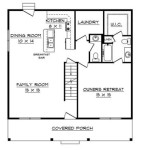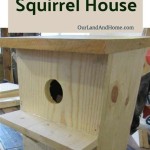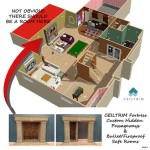Simple Dog House Plans refer to easily understandable and straightforward instructions designed to guide individuals in constructing basic dog houses. These plans typically provide detailed steps, material requirements, and illustrations to facilitate the building process, even for those with limited carpentry experience. By following simple dog house plans, pet owners can create comfortable and weather-resistant shelters for their canine companions.
Dog houses are essential for providing dogs with a sense of security, protection from harsh weather conditions, and a place to rest and retreat. They can be used both indoors and outdoors, offering a designated space for the dog within the home or a cozy shelter in the backyard.
In the following sections, we will explore various simple dog house plans that cater to different dog breeds, sizes, and specific requirements. These plans include detailed instructions, material lists, and helpful tips to ensure successful construction, ensuring that your furry friend has a comfortable and secure abode.
When considering simple dog house plans, several important points should be kept in mind:
- Size and breed: Determine the appropriate size for your dog’s breed and weight.
- Materials: Choose durable and weather-resistant materials such as wood, plywood, or plastic.
- Ventilation: Ensure proper ventilation to prevent moisture buildup and overheating.
- Insulation: Consider insulation for added warmth in cold climates.
- Roof design: Select a roof design that provides protection from rain and snow.
- Entry size: Make the entry large enough for your dog to enter and exit comfortably.
- Elevation: Raise the dog house off the ground to prevent moisture and drafts.
- Drainage: Ensure the floor has drainage holes to prevent water accumulation.
- Safety: Use non-toxic materials and avoid sharp edges.
- Customization: Add personal touches, such as a doggy door or a window.
By considering these points, you can create a simple dog house plan that meets your dog’s specific needs and provides a comfortable and safe shelter.
Size and breed: Determine the appropriate size for your dog’s breed and weight.
When choosing a simple dog house plan, the size of your dog is a crucial factor to consider. The dog house should be large enough for your dog to stand up, turn around, and lie down comfortably. However, it should not be too large, as this can make it difficult for your dog to maintain its body heat in cold weather.
As a general rule of thumb, the following measurements can be used to determine the appropriate size for your dog house:
- Height: The height of the dog house should be about 6 inches taller than your dog’s height at the shoulder.
- Width: The width of the dog house should be about 4 inches wider than your dog’s width at the shoulders.
- Length: The length of the dog house should be about 6 inches longer than your dog’s length from nose to tail.
- Entry size: The entry size should be large enough for your dog to enter and exit comfortably. A good rule of thumb is to make the entry about 6 inches wide and 8 inches tall.
It is important to note that these measurements are just a starting point. You may need to adjust the size of the dog house slightly depending on your dog’s breed and individual needs.
Materials: Choose durable and weather-resistant materials such as wood, plywood, or plastic.
When choosing materials for your simple dog house plan, it is important to select those that are durable and weather-resistant. This will ensure that the dog house can withstand the elements and provide your dog with a comfortable and safe shelter.
Wood
Wood is a popular choice for dog houses because it is relatively inexpensive, easy to work with, and durable. However, it is important to choose a type of wood that is resistant to rot and decay, such as cedar, redwood, or pressure-treated lumber.
Plywood
Plywood is another good option for dog houses. It is made from thin layers of wood that are glued together, which makes it strong and durable. Plywood is also resistant to rot and decay, making it a good choice for outdoor use.
Plastic
Plastic is a good choice for dog houses if you are looking for a material that is lightweight and easy to clean. Plastic dog houses are also resistant to rot and decay, and they can be made in a variety of colors and styles.
Other materials
In addition to wood, plywood, and plastic, there are a number of other materials that can be used to build a dog house. These include metal, concrete, and even straw bales. However, these materials are not as common as wood, plywood, or plastic, and they may be more difficult to work with.
Choosing the right material
The best material for your dog house will depend on your individual needs and preferences. If you are looking for a durable and weather-resistant material that is easy to work with, wood or plywood is a good choice. If you are looking for a lightweight and easy-to-clean material, plastic is a good option.Once you have chosen the materials for your dog house, you can begin to build it. Be sure to follow the instructions in your simple dog house plan carefully to ensure that the dog house is sturdy and safe for your dog.
Ventilation: Ensure proper ventilation to prevent moisture buildup and overheating.
Proper ventilation is essential for any dog house, as it helps to prevent moisture buildup and overheating. Moisture can lead to mold and mildew growth, which can be harmful to your dog’s health. Overheating can also be dangerous, especially in hot weather.
- Provide multiple ventilation openings: The dog house should have at least two ventilation openings, one near the top and one near the bottom. This will allow air to circulate and help to prevent moisture buildup.
- Use a mesh or slatted material for the ventilation openings: This will allow air to flow through while keeping out insects and other pests.
- Avoid using solid materials for the ventilation openings: This will block airflow and can lead to moisture buildup.
- Make sure the ventilation openings are not too large: This will help to prevent drafts and keep your dog warm in cold weather.
By following these tips, you can ensure that your dog house has proper ventilation and provides a comfortable and healthy environment for your dog.
Insulation: Consider insulation for added warmth in cold climates.
Why is insulation important?
Insulation is an important consideration for dog houses in cold climates. It helps to trap warm air inside the dog house, keeping your dog warm and comfortable. Without insulation, the dog house will quickly lose heat, making it difficult for your dog to stay warm.
What types of insulation can I use?
There are a variety of insulation materials that can be used in dog houses, including:
- Straw: Straw is a natural insulator that is inexpensive and easy to find. It is also biodegradable, making it an environmentally friendly option.
- Foam insulation: Foam insulation is a lightweight and effective insulator that is available in a variety of forms, including sheets, rolls, and spray foam.
- Fiberglass insulation: Fiberglass insulation is a common type of insulation that is made from glass fibers. It is effective at insulating against both heat and cold.
How do I insulate my dog house?
To insulate your dog house, you will need to:
- Choose an insulation material: Select an insulation material that is appropriate for your climate and your dog’s needs.
- Cut the insulation to size: Cut the insulation to the size of the walls, floor, and roof of the dog house.
- Install the insulation: Install the insulation in the dog house, making sure to fill all of the gaps and cracks.
- Cover the insulation: Cover the insulation with a layer of plywood or other material to protect it from moisture and damage.
Paragraph after details
By following these steps, you can insulate your dog house and provide your dog with a warm and comfortable shelter during the cold winter months.
Roof design: Select a roof design that provides protection from rain and snow.
Sloped roof
A sloped roof is the most common type of roof for dog houses. It is designed to shed water and snow, preventing it from accumulating on the roof and causing leaks. The slope of the roof should be at least 15 degrees to ensure proper drainage.
Gable roof
A gable roof is a variation of the sloped roof. It has two sloping sides that meet at a ridge in the center of the roof. Gable roofs are more complex to build than sloped roofs, but they offer better protection from the elements. The pitch of a gable roof should be at least 20 degrees to ensure proper drainage.
Flat roof
Flat roofs are less common on dog houses, but they can be a good option for areas with mild climates. Flat roofs are easier to build than sloped roofs, but they are more susceptible to leaks. If you choose to build a flat roof, be sure to use waterproof materials and seal all of the seams carefully.
Roofing materials
There are a variety of roofing materials that can be used on dog houses, including asphalt shingles, metal roofing, and wood shakes. Asphalt shingles are the most common type of roofing material, and they are a good choice for dog houses because they are affordable and easy to install. Metal roofing is more expensive than asphalt shingles, but it is more durable and can withstand high winds and heavy snow loads. Wood shakes are a natural roofing material that gives dog houses a rustic look. However, wood shakes are more expensive than other roofing materials and they require more maintenance.
Choosing the right roof design
The best roof design for your dog house will depend on your climate and your dog’s needs. If you live in an area with heavy rain or snow, a sloped roof or gable roof is a good choice. If you live in an area with a mild climate, a flat roof may be a good option. Once you have chosen a roof design, be sure to use high-quality materials and follow the manufacturer’s instructions carefully to ensure that your dog house is weatherproof.
Entry size: Make the entry large enough for your dog to enter and exit comfortably.
### Why is the entry size important?
The entry size of your dog house is important for several reasons. First, it needs to be large enough for your dog to enter and exit comfortably without having to stoop or squeeze through. Second, it should be small enough to prevent drafts and keep your dog warm in cold weather.
How do I determine the right entry size?
To determine the right entry size for your dog house, measure your dog’s height at the shoulder and width at the shoulders. The entry should be at least 6 inches taller and wider than these measurements.
### What if my dog is still growing?
If your dog is still growing, you may want to make the entry slightly larger than the recommended size. This will ensure that your dog will be able to use the dog house comfortably even when it is fully grown.
### Paragraph after details
Once you have determined the right entry size, be sure to cut the opening carefully and sand down any rough edges. You may also want to add a weatherstripping around the edges of the opening to prevent drafts.
Elevation: Raise the dog house off the ground to prevent moisture and drafts.
Elevating your dog house off the ground is an important step to prevent moisture and drafts. Moisture can lead to mold and mildew growth, which can be harmful to your dog’s health. Drafts can make your dog uncomfortable and cold, especially in winter.
- Prevents moisture buildup: Raising the dog house off the ground allows air to circulate underneath it, which helps to prevent moisture from accumulating. This is especially important in humid climates or during rainy seasons.
- Reduces drafts: A raised dog house is less likely to be affected by drafts, which can make your dog cold and uncomfortable. This is especially important in windy climates or during cold weather.
- Protects against pests: Elevating the dog house off the ground can help to keep pests, such as insects and rodents, away from your dog. This is because pests are less likely to be able to climb up into a raised dog house.
- Improves drainage: If your dog house is raised off the ground, water will be able to drain away more easily. This is important to prevent the dog house from becoming waterlogged and muddy.
There are several ways to elevate your dog house off the ground. One way is to place it on a platform or deck. Another way is to use legs or stilts to raise the dog house off the ground. When choosing a method to elevate your dog house, be sure to choose one that is sturdy and stable.
Drainage: Ensure the floor has drainage holes to prevent water accumulation.
Ensuring that your dog house has proper drainage is essential to prevent water from accumulating on the floor. Water accumulation can lead to mold and mildew growth, which can be harmful to your dog’s health. It can also make the dog house uncomfortable and cold.
- Prevents water accumulation: Drainage holes in the floor of the dog house allow water to drain out, preventing it from accumulating. This is especially important in areas with heavy rainfall or snowmelt.
- Reduces moisture: By allowing water to drain out, drainage holes help to reduce moisture levels in the dog house. This helps to prevent mold and mildew growth, which can cause respiratory problems for your dog.
- Improves air circulation: Drainage holes allow air to circulate under the floor of the dog house. This helps to keep the dog house dry and prevents musty odors.
- Prevents freezing: In cold climates, drainage holes help to prevent water from freezing on the floor of the dog house. This can make the dog house more comfortable for your dog and prevent him from getting cold.
To ensure proper drainage, make sure that the drainage holes are large enough to allow water to drain out easily. You may also want to install a gravel or rock base under the dog house to help with drainage.
Safety: Use non-toxic materials and avoid sharp edges.
When building a dog house, it is important to use non-toxic materials and avoid sharp edges to ensure the safety of your dog.
Non-toxic materials
All of the materials used to build the dog house should be non-toxic. This includes the wood, plywood, paint, and any other materials that your dog may come into contact with. Non-toxic materials will help to prevent your dog from getting sick if he chews on or ingests any of the materials.
Avoid sharp edges
All of the edges of the dog house should be sanded smooth to avoid sharp edges. Sharp edges can cut or scratch your dog, especially if he is running around and playing in the dog house.
Other safety considerations
In addition to using non-toxic materials and avoiding sharp edges, there are a few other safety considerations to keep in mind when building a dog house:
- Make sure the dog house is the right size for your dog. A dog house that is too small will be cramped and uncomfortable for your dog, while a dog house that is too large will be drafty and cold.
- Provide ventilation in the dog house. Ventilation is important to prevent moisture from building up inside the dog house, which can lead to mold and mildew growth. Mold and mildew can cause respiratory problems for your dog.
- Elevate the dog house off the ground. Elevating the dog house off the ground will help to prevent moisture from seeping into the dog house and will also help to keep your dog warm in cold weather.
By following these safety tips, you can build a safe and comfortable dog house for your furry friend.
It is also important to inspect the dog house regularly for any damage or wear and tear. If you find any damage, be sure to repair it immediately to prevent your dog from getting injured.
Customization: Add personal touches, such as a doggy door or a window.
Once you have built a basic dog house, you can add personal touches to make it more comfortable and stylish for your dog. Here are a few ideas:
- Doggy door: A doggy door is a great way to give your dog easy access to the outdoors. This is especially useful if you have a fenced-in yard and want your dog to be able to come and go as he pleases.
- Window: A window can provide ventilation and natural light for your dog house. It can also be a fun way for your dog to watch the world go by.
- Ramp: A ramp can make it easier for your dog to get in and out of the dog house, especially if he is older or has mobility issues.
- Paint or stain: You can paint or stain the dog house to match your home’s dcor or to give it a unique look. Be sure to use non-toxic paint or stain that is safe for your dog.
These are just a few ideas for customizing your dog house. With a little creativity, you can create a one-of-a-kind dog house that your furry friend will love.







:max_bytes(150000):strip_icc()/Beautiful-Pallet-Dog-House-with-Veranda-1-5a202f90494ec90037893a82.jpg)


Related Posts








